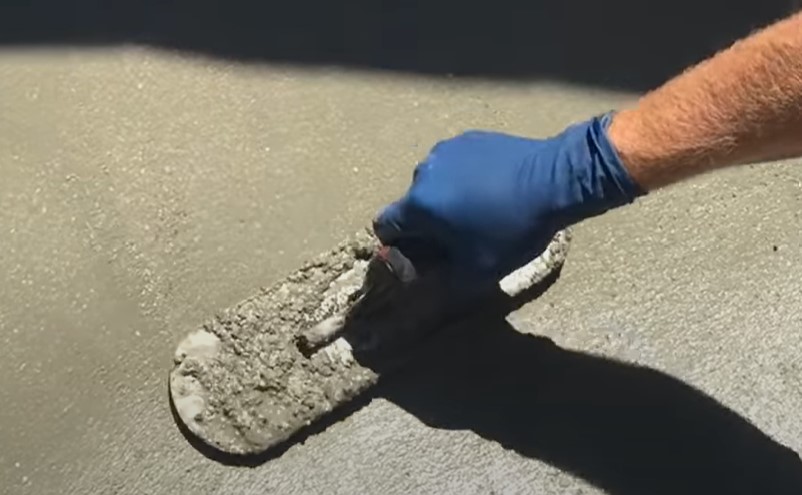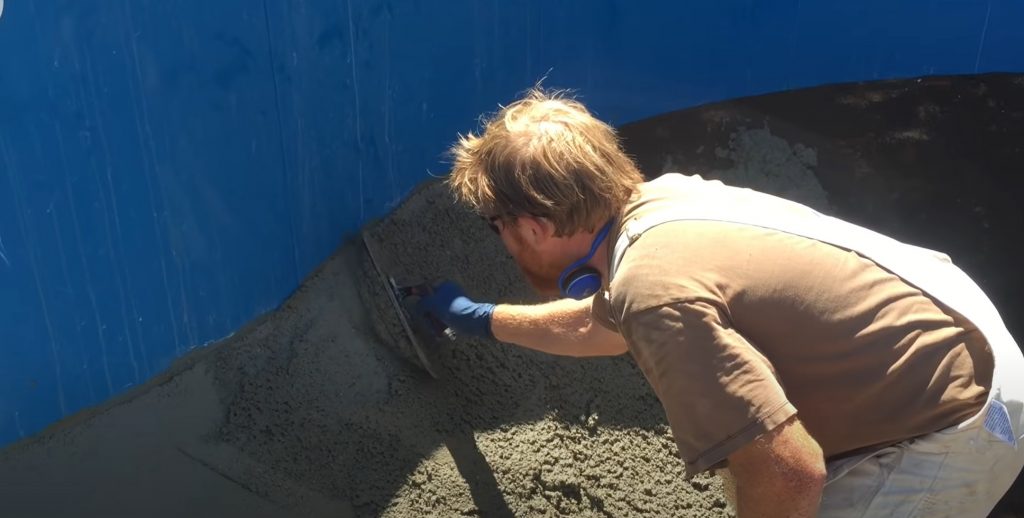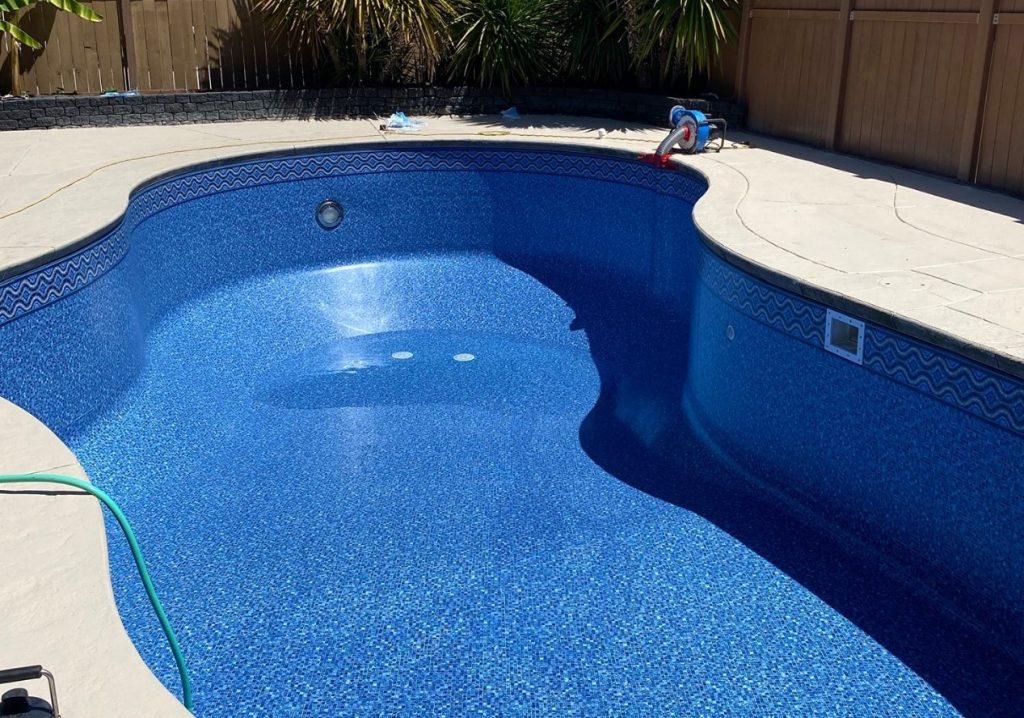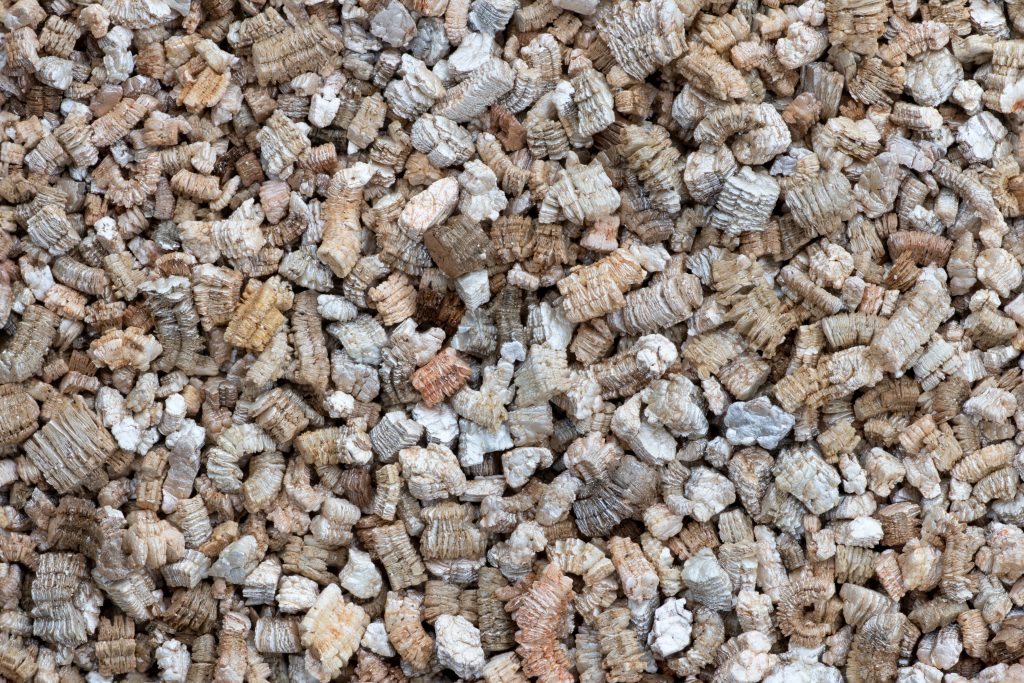The Vermiculite Touch


In the world of concrete, vermiculite is in some ways an unusual material – a lightweight aggregate that creates a durable and ultra-smooth substrate for vinyl liner pool. (It’s also widely used as a soil amendment in agriculture.) Phoenix B. Owens has been using it in his pools for decades, and believe with the right touch, vermiculite is a perfect choice.
By Phoenix B. Owens
Vermiculite is fascinating stuff, at least it is for those of us who have had reason to work with it. It’s a naturally occurring mineral that in its raw form is sometimes described as “mica-like” because it exists in layered granules. Chemically speaking, it’s made of hydrated magnesium, iron and aluminum silicate.
After it’s mined, vermiculite is heated in a furnace where it takes on an accordion-like shape, and is processed into different sizes for different uses, most commonly as a soil amendment that retains moisture. Because it has a tremendous capacity to withstand heat, vermiculite also has a number of specialized industrial applications.
It is also commonly used in the bottom of vinyl liner pools. I’ve worked with vermiculite for years as a lining material for watershapes, specifically as an alternative to concrete or sand in the bottom of liner pools. I affectionately call it, the “balsa wood of concrete” because it is incredibly lightweight. Yet, it’s not porous and has what some people describe as a soft texture, which is counterintuitive for cementitious material.
AGGREGATE LIGHT
Essentially, vermiculite replaces sand as the aggregate in concrete. You mix it with cement and apply in much the same way. My dad started working with it back in the 70s because he found that a liner installed over concrete made with sand will develop holes as it slowly moves across the concrete, as it expands and contracts over time. Vermiculite is much smoother and more stable, so liners last longer.
Although it’s the best available substrate for vinyl liners, it is also far more expensive than standard concrete and certainly sand. Agricultural use has increased vermiculate demand because of its water-saving qualities, and as a result, the price has skyrocketed in recent years.
It comes in three grades: fine, #2 coarse and #3 coarse. I prefer the #2 coarse because in my view it makes the best, most workable material; but, unfortunately that is also the grade often in the shortest supply.
There are cement/vermiculite premix products available, which I use only when absolutely necessary, because I’ve found those products don’t hold up to troweling as well as the mix design I use.
I mix two parts of #2 coarse vermiculite, one bag Portland cement and a coffee can of lime. The lime gives the material a very creamy texture, the consistency of oatmeal, which allows you to trowel it over and over again until it’s perfectly smooth. The premix products use fine grade, which starts to tear on the surface after only a couple of passes with the trowel, so you’re under more pressure to get it smooth right at the start. Keep in mind that if you have a rough surface, which defeats the purpose of using vermiculite in the first place.
Because vermiculite is so good at holding water, you have to use a tremendous amount of H2O to mix it to a workable consistency. Each batch takes about 55 gallons, much more than typical concrete. I use a nine-cubic yard mortar mixer.
SMOOTH APPLICATION
The first step is to put down a layer of sand and compact it with plate compactor, so that you have a smooth and stable substrate. As is true of any form of concrete, you want a reliable base to minimize movement and cracking.
In our work, we keep it simple and have one guy bringing the vermiculite from the mixer into the pool using five-gallon buckets, and another guy, troweling it into place. We start on the coves, and then move to the floor. We’re apply a one-and-a-half to two-inch thick layer.
One batch in the mortar mixer covers only about 10-square feet, so you’re constantly mixing and applying. A 20-by-40 pool takes about 10-12 hours. It is very labor intensive and grueling work. It can be pumped and delivered by hose, and does perform well when mixed in large batches.
There’s no exact guideline for determining the perfect consistency. There are differences in materials and temperature makes a big difference. Because it holds so much water, vermiculite can take forever to reach a workable consistency when it’s cold. It’s much easier to mix in warm temps over 80 degrees. We always prefer installing vermiculite in the summer.

In terms of the troweling technique, moisture content plays a major role. On the first pass, I turn the trowel on its side to leave the surface rough. I want to let some of the moisture evaporate from the surface, then I go over it again leaving it somewhat smoother. Then on the third time, I’m usually able to go back over it to make it super smooth.
The hotter the weather, the faster the application process.
WAIT FOR THE LINER
Some installers will drop the liner on the fresh vermiculite on the same day. I prefer to let it sit over night and congeal. I come back the next morning and look for imperfections. At that point, there’s still enough moisture that you can easily smooth out any rough spots.
Also, by waiting overnight, the material is more durable. When crews drop the liner on the same day, they have to lower it very carefully so they don’t roughen the surface by dragging the liner over the newly applied material. By the next day, it’s set up enough so that you don’t have to worry about damaging it with liner. After all, the idea is to get a perfectly smooth surface beneath the liner, so why screw that up because you’re in a hurry?
On the other hand, you certainly don’t want it dry out completely before you install the liner. Vermiculite requires moisture and pressure to maintain its shape.

I’ve seen situations where someone removes an old liner and then allows the vermiculite to sit in the sun for several days before installing a new one. When vermiculite dries out too much, it will shrink, lift away from the walls and crack. Then you have rip it out and start all over.
With vermiculite, you have about two days after you remove a liner to install the new one. It’s an easy problem to avoid with just a small amount of planning and coordination, but obviously a costly mistake if you let it go bad.
Although vermiculite does have its idiosyncrasies and as mentioned above, it is expensive, I believe it’s absolutely worth it. Liners last much longer over vermiculite surfaces than they do over sand or other types of concrete. As liners themselves become more expensive with textures and beautiful patterns, extending their service life has become more important. That’s where a quality vermiculite surface becomes worth every penny.
Phoenix B. Owens is founder and owner of Owens Custom Pools in Eugene, Ore., a firm that has built a reputation for highly adventurous pool designs.











